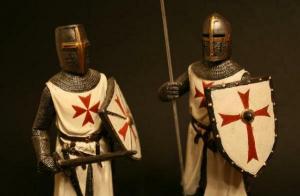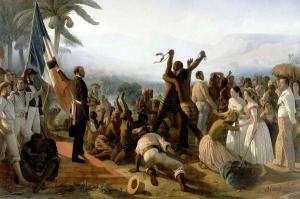The 10 plagues of EGYPT
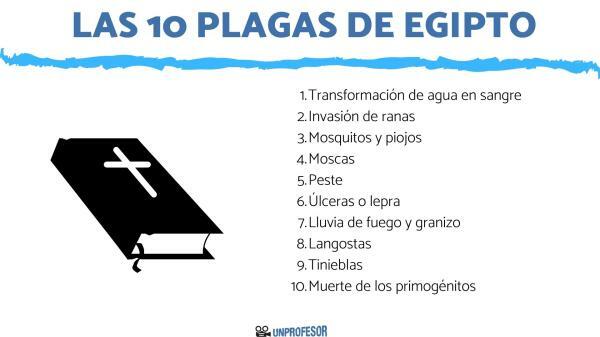
The 10 plagues of Egypt are the transformation of water into blood, the invasion of frogs, mosquitoes and lice, flies, the appearance of plague, ulcers... We tell you in a Teacher.
He Old Testament It is a set of religious stories that tell the story of the Jewish people, commenting on their travels and problems when facing their enemies. One of the best known stories is that of Moses, and within this we must talk about the 10 plagues of Egypt, being one of the best known biblical stories. For all these reasons, in this lesson from a Teacher we are going to offer a summary of the history of the 10 plagues of Egypt, especially designed for boys and girls.
The 10 plagues of Egypt It is a religious text Old Testament or Torah, which tells how God sent a series of calamities to Egypt, its objective being to force the ruler to set the slaves free Hebrews in the region, letting them out of Egypt and giving them their freedom.
The story of the plagues is found in the book of Exodus, narrating the
story of moses and his brother Aaron, who during several texts try to negotiate with Pharaoh the departure of the Hebrew people. Pharaoh refuses, and therefore God decides to launch the 10 plagues against the Egyptian population.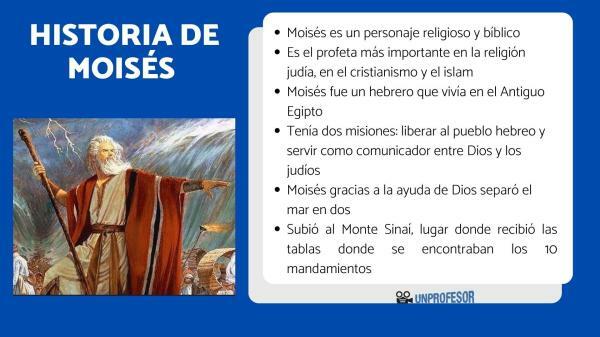
To understand what Egypt suffered, we must list the 10 plagues of Egypt, describing each one of them to know what each one was based on.
The 10 plagues of Egypt were the following:
- transformation of water into blood: While Pharaoh was bathing in a river, Moses touched the water with a rod and turned the water into blood. The transformation of water into blood produced supply problems, causing the Egyptians to dig wells to find water.
- Frog Invasion: Some time after the first plague, Moses again dipped his staff into the Egyptian river, and frogs began to emerge from it. The amphibians invaded the houses and even the palace, until the pharaoh asked for mercy and the plague was stopped, although the slaves were still not free.
- Mosquitoes and lice: After being tricked by Pharaoh, Moses turned the dust into mosquitoes and lice. These insects attacked every living thing in Egypt, but even so, Pharaoh did not want to give freedom to the Hebrews.
- Flies: After the mosquitoes, Moses launched a plague of flies against the Egyptian population, although they did not harass the Hebrews who lived in Egypt. Pharaoh said again that he would free the Jews, but after the flies disappeared he changed his word again.
- Plague: The fifth plague of Egypt was one of the hardest, since it brought a plague to all races livestock animals, causing the Egyptians did not have animals to work or to feed. There was not a single animal not affected by this plague, although some were able to overcome it.
- Ulcers or leprosy: The entire Egyptian population suffered a series of skin ulcers, thought to be leprosy, which brought death to many Egyptians, including sorcerers.
- fire rain and hail: The seventh plague was a huge destructive storm, which brought destruction to all levels, including people, livestock and the territory itself.
- lobsters: Pharaoh tried to negotiate the release of Jews, but only giving freedom to adult males, something that Moses refused to allow. So he launched a powerful plague of locusts, which wiped out all the remaining crops in the region.
- Darkness: For three days Moses brought total darkness to all of Egypt, which is said to have been so thick that one could even touch it. On the other hand, the Hebrews did not suffer from darkness, being able to see, causing part of Egypt to be in darkness and another to have good visibility.
- Death of the firstborn: The worst of the 10 plagues of Egypt is the one that brought the death of all the first children of the Egyptians. It is said that even the son of the pharaoh was killed by this plague, being the moment in which the freedom was given to the Hebrew people, understanding that they had already taken away everything that could be taken from them, and that the power of God was too much.
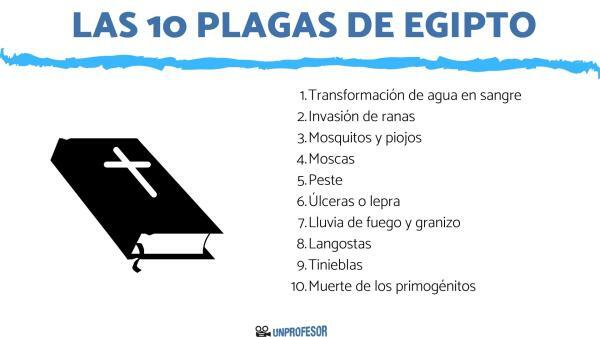
To continue with this summary of the 10 plagues of Egypt, we must talk about the main consequences that these brought to the African nation, being key to understanding the great influence that it got.
- The most direct consequence of the plagues was the liberation of the Hebrew people that he received the word of Pharaoh to be able to escape from the region. Even with this, Pharaoh and his army pursued them to annihilate them, being killed by the waters of the Red Sea when Moses parted them to let the Jewish population through, but he made them return to their position when the Egyptian troops passed through.
- The plagues brought the liberation of the Hebrew people, and with it the beginning of their journey through the desert, being a long way to find the sacred city that God made for them. Some of the main biblical events took place on this road, such as the birth of the tables of 10 Commandments.
- On the part of the Egyptian population the plagues brought enormous traumas to the local Egyptians, who suffered for a long time horrible hardships from pests. We can say that they were the ones who suffered the most, since Pharaoh ignored them in his plans.


